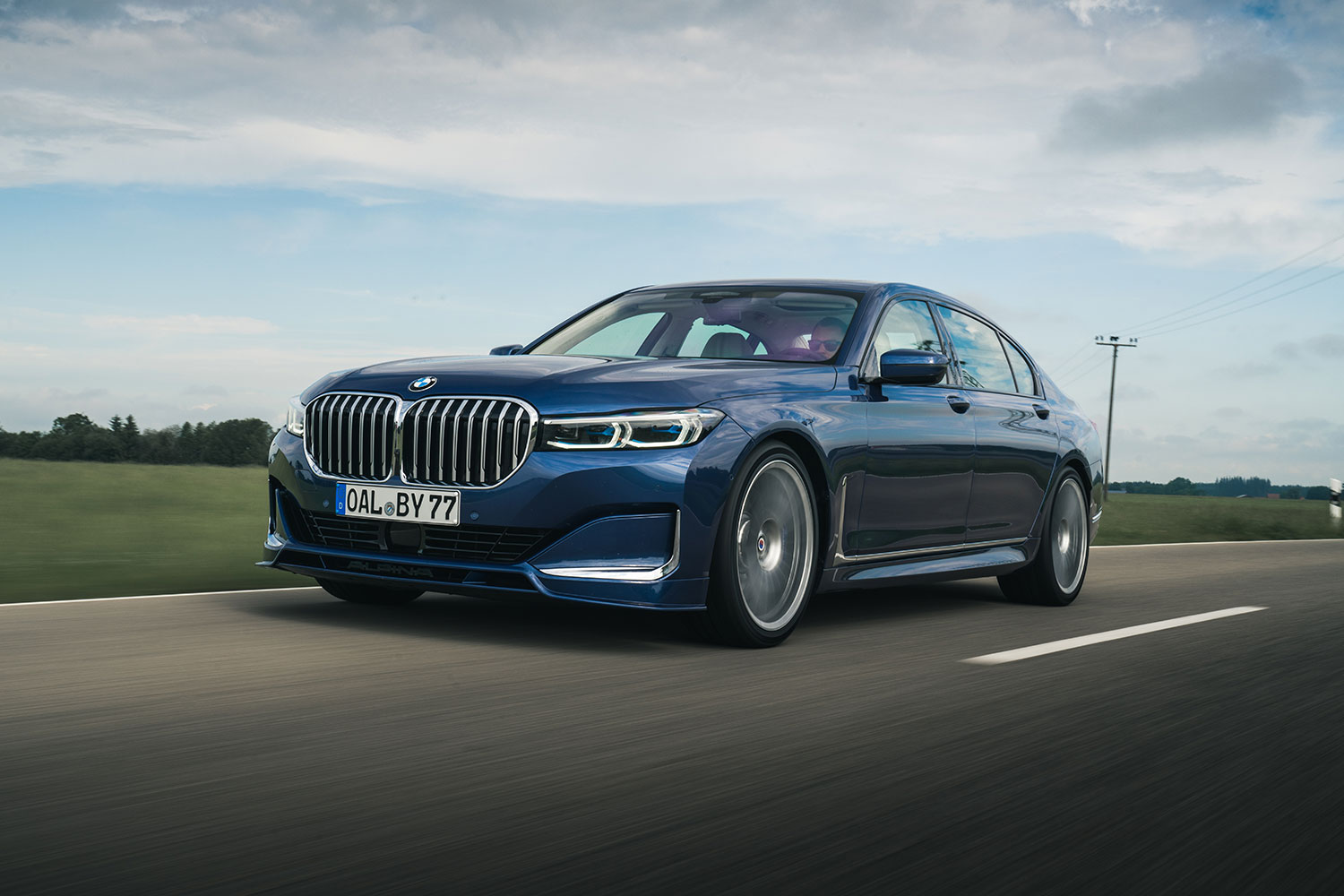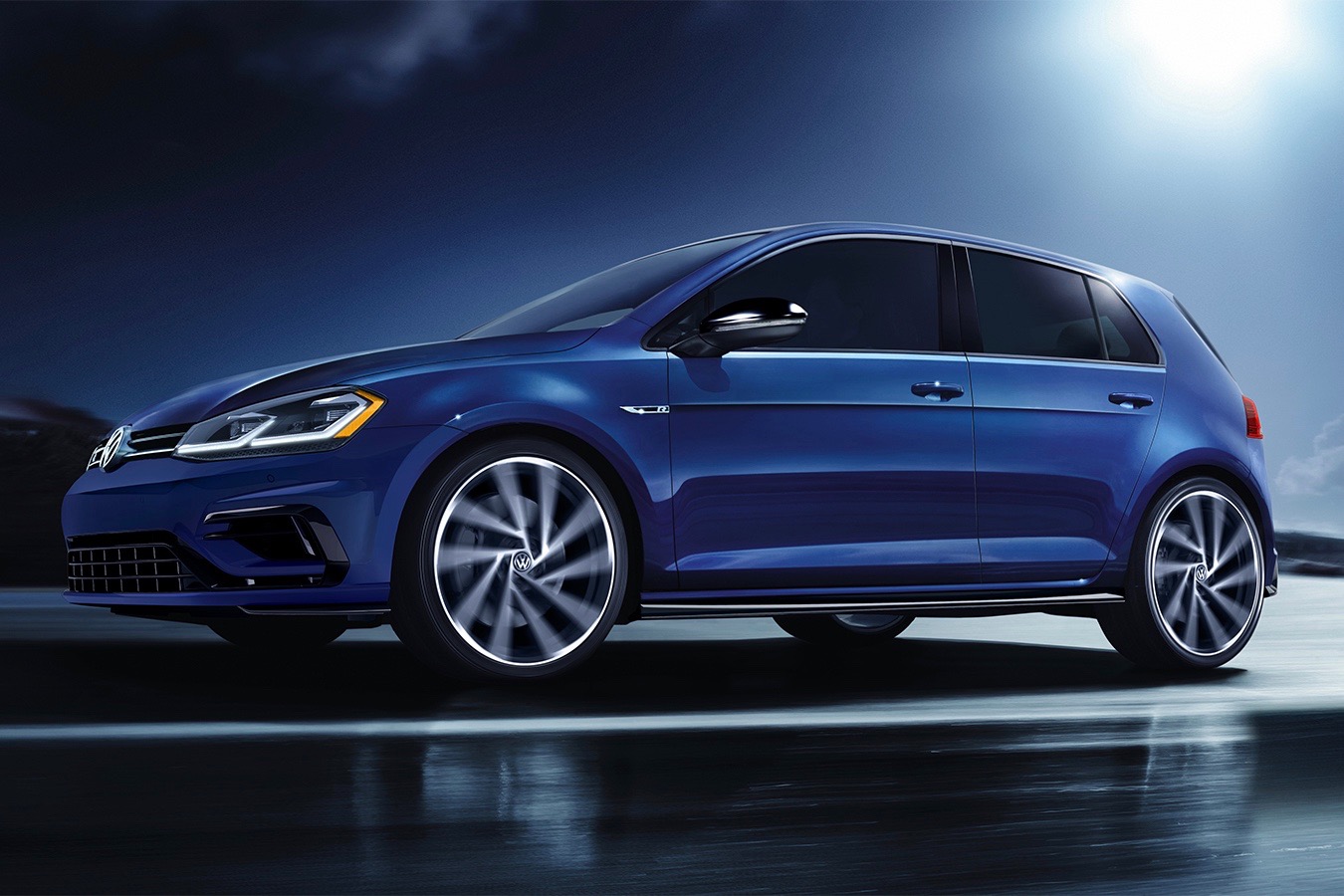During the World Wars, Allied navies equipped seemingly harmless merchant ships with guns and torpedoes to ward off prowling German U-Boats. Called Q-Ships, they were all about the element of surprise. The best sleeper cars are automotive equivalent of Q-Ships.
There’s no rule that says a performance car has to have two doors or the low-slung body of a sports car. Disguised as sensible sedans and wagons, sleepers keep a lower profile. Sleepers are cars for serious performance junkies — without the flash of traditional performance cars, they can’t be used to show off, and they put automotive performance in practical packages. They also provide the satisfaction that no one else has any idea what kind of fury lies under the hood.
Audi RS 2 Avant

This Audi may look like a station wagon, but it’s actually a Porsche in disguise — kind of. It was co-developed by the two German companies and built at Porsche’s Rossle-Bau plant in Zuffenhausen, Germany; the same plant that built the 959 supercar and, later, the Mercedes-Benz 500E.
More importantly, Porsche also did some work on the RS 2’s engine. It’s the 2.2-liter turbocharged inline-five from the Audi 80 Avant (on which the RS 2 is based) but Zuffenhausen was able to extract 315 horsepower and 302 pound-feet of torque. That was enough to get the RS 2 to 62 mph in 4.8 seconds, and to a top speed of 163 mph, although production cars were electronically limited 155 mph. All of this performance came in the body of a lowly family car.
The RS2 may have seemed like an unlikely performance icon, but it began Audi’s tradition of hardcore RS performance models, a tradition that continues today with cars like the RS 6 Avant and RS 5. Pray you don’t meet up with one at a stoplight.
Alpina B7

A BMW 7 Series looks better suited to shuttling executives in comfort than carving corners, but the tuning wizards at Alpina think differently. The company built a hot rod 7 Series from 2007 to 2008, and it has tuned every generation of BMW’s flagship model since. The current Alpina B7 uses a 4.4-liter twin-turbocharged V8 making 608 hp and 590 lb-ft of torque, with standard all-wheel drive to ensure all of that power gets to the pavement.
Alpina claims the B7 will do zero to 62 mph in 3.6 seconds, with a supercar-rivaling top speed of 205 mph. We didn’t go quite that fast on our test drive across the German countryside, but can confirm that the B7 is a great way to get from place to place in a hurry.
Buick Grand National

Buyers don’t come to Buick showrooms seeking performance, so its cars are the perfect base for sleepers. The company built a surprising amount of sports cars over the past few decades. The most popular — the one enthusiasts keep begging the brand to bring back — is the Grand National, which Buick launched in 1982 to commemorate its success in NASCAR.
The Grand National started out as little more than an option package for the Regal, but it gradually morphed into a true sports sedan with black paint and a turbocharged 3.8-liter V6. Its 200-hp output doesn’t sound like much, but it was a respectable statistic for the era. The original Grand National could beat a Chevrolet Camaro in a quarter-mile race, and it could keep up with a Corvette. Power went up to 235 hp, then 245 hp, and finally 276 hp for the limited-edition GNX introduced in 1987.
Cadillac CTS-V Wagon

The Cadillac CTS remains one of the best-looking wagons ever built by an American company. It’s still a wagon, though, which means it wouldn’t be most people’s first choice for a performance car. That makes it one of the ultimate sleepers on the road today. It used an evolution of the last-generation Corvette ZR1‘s supercharged 6.2-liter V8 tuned to pump out 556 hp and 551 lb-ft. It can also haul plywood, a month’s groceries, or your entire family for a weekend at the lake.
The CTS-V Wagon takes 4.0 seconds flat to reach 60 mph from a stop, and it continues accelerating until the odometer reads 185 mph. Its spirit lives on in the current CTS-V, but sadly, Cadillac no longer makes the wagon version. The remaining CTS-V sedan also faces a downgrade from V8 to turbocharged V6 power, although Cadillac has hinted that a more potent version is in the works.
Ford Taurus SHO

The Taurus has been a big success for Ford over the years, as both an import-fighting midsize sedan in the ’80s and a full-size near-luxury car today. However, in normal guise, it’s one of the most boring cars on the road.
There are fewer cases of automotive schizophrenia as severe as the Ford Taurus SHO. SHO, by the way, stands for Super High Output. Each version of the SHO has been a little different. The car launched in 1989 with a Yamaha-designed 3.0-liter V6, a five-speed manual transmission, and a restyled body made of parts taken from the Mercury Sable. The V6 produced 220 hp and 200 lb-ft. It got displacement and torque boosts to 3.2 liters and 215 lb-ft, respectively, with a 1992 facelift. In 1996, The SHO got a 3.4-liter Yamaha V8, with 235 hp and 230 lb-ft. For some reason, not many people were in the market for a V8-engined Taurus, so it didn’t last very long.
Fast forward to 2017. After turning the Taurus into a full-size sedan, Ford introduced a new SHO built around a turbocharged 3.5-liter EcoBoost V6 and all-wheel drive. The EcoBoost engine produced a stout 365 hp and 350 lb-ft, although, unlike the original SHO, a six-speed automatic was the only available transmission. However, the Taurus was eliminated in Ford’s recent car purge.
Jeep Grand Cherokee Trackhawk

Everyone knows what a Hellcat is, and everyone knows it’s got 707 hp. Dodge’s high-output models aren’t great options if you’re looking for a low-key performance car, because people will stop you every five minutes to ask if it’s a Hellcat. What a lot of motorists haven’t realized yet is that Jeep stuffs the exact same supercharged 6.2-liter V8 between the Grand Cherokee’s fenders. It’s called the Trackhawk, and it can embarrass many purpose-designed sports cars with a six-digit price tag.
The visual modifications are largely limited to bigger air dams in the front bumper, larger wheels, and a spoiler right above the rear window. It looks fast — it certainly doesn’t look like an off-roader — but it doesn’t look 707-hp fast. The eight pistons come together to send the grandest of all Grand Cherokees from 0 to 60 mph in just 3.5 seconds, and on to a top speed limited to 180 mph.
Bentley Mulsanne Speed
The Bentley Mulsanne’s restrained, stately lines exude British elegance, not all-out performance. Bentley will happily sell you one with good manners, but it can also build you a Mulsanne Speed with a twin-turbocharged V8 that belts out 530 hp and a monstrous 811 lb-ft. The Mulsanne Speed is lively to drive, especially for such a big sedan. It’s seriously quick, too, but it doesn’t look the part. It doesn’t come with a spoiler, rally lights, or scissor doors.
Don’t expect a a track car with a stripped-down cabin like the Alfa Romeo 4C. It’s still a Bentley, so the interior is decked out with a long list of luxury amenities like quilted leather upholstery, real wood trim, soft leather everywhere, and even picnic tables for the rear passengers. You can even order a built-in champagne cooler if you think you’ll have something to celebrate along the way. If you have enough of it, the Mulsanne could turn into a completely different kind of sleeper.
Ford Mustang EcoBoost High Performance Package

A Ford Mustang will never be as anonymous as a sedan or hatchback, but this one still hides a few surprises. To the uninitiated, a Mustang without a V8 engine is nothing special. It’s the car you get because you can’t afford one of the V8 models. It’s the car you rent on vacation. Not this one.
The High Performance Package for Ford’s 2.3-liter turbocharged EcoBoost four-cylinder Mustang brings upgrades from the Ford Focus RS hot hatchback. The result is 330 hp, which is more than most V8 Mustangs made a decade ago. The package also includes upgraded brakes and suspension, making this Mustang agile as well as quick.
The best, though, is that most people will never know what this car really is. Aside from model-specific 19-inch wheels, subtle hood stripes and badging, the High Performance Package looks like something that just drove off the Hertz lot at an airport. Mustang purists will never know what hit them.
Volkswagen Golf R

To the uninitiated, the Volkswagen Golf R looks like a regular compact hatchback with big wheels. There are no fins, wings, or rally-inspired stickers to hint at the power that lurks beneath the hood. But, believe us, it’s there. The R uses a 2.0-liter turbocharged four-cylinder engine that delivers 305 hp and 295 lb-ft. It channels its power to all four wheels via either a manual or an automatic transmission, and a Haldex-type all-wheel drive system. That’s serious hardware.
The result? A 0 to 60 mph time of 5.2 seconds, a top speed limited to 155 mph, and grin-inducing handling turn after turn. But unlike an Audi TT or a Chevrolet Camaro, which also post stellar performance numbers, the Golf R can take you and four friends out for a night on the town, or carry a full load of furniture from Ikea. It’s a hatchback, after all. We’re eager to see if VW can maintain that balance of performance and practicality with a new R based on the new eight-generation Golf.
Volvo V70 R

Sweden’s most enduring car company is known for safety and reliability; it’s an entire brand built around reasonableness. Once in a while, though, Volvo’s engineers go a little crazy. Beginning with the 1996 850, Volvo built a series of hot rod station wagons (and a few sedans), bestowing them with the R badge.
Launched in 2003, the V70 R (and S60 R sedan) were the most refined of the breed. A turbocharged inline-five produced 300 hp and 295 lb-ft, and was connected to a performance-tuned Haldex all-wheel drive system. The V70 R also featured Volvo’s “Four-C” (Continuously Controlled Chassis Concept) adjustable suspension system. One of the first of its kind, it allowed drivers to adjust the firmness of the suspension on the fly, with just a push of a button.
Despite looking like it belonged in an elementary school parking lot, the V70 R was able to do 0 to 60 mph in 6.0 seconds flat and reach an electronically limited top speed of 155 mph. They even raced the V60 version, so you know it’s a no-foolin’ sleeper machine.
Editors' Recommendations
- Check out Spectre, Rolls-Royce’s first all-electric car
- Check out this Apple Car rendering based on the company’s patents
- The best compact cars for 2021
- The 2020 Audi RS 4 Avant proves the best car is always a wagon
- Microeconomics and a little magic help bring the 2020 Audi RS 6 Avant to U.S.





